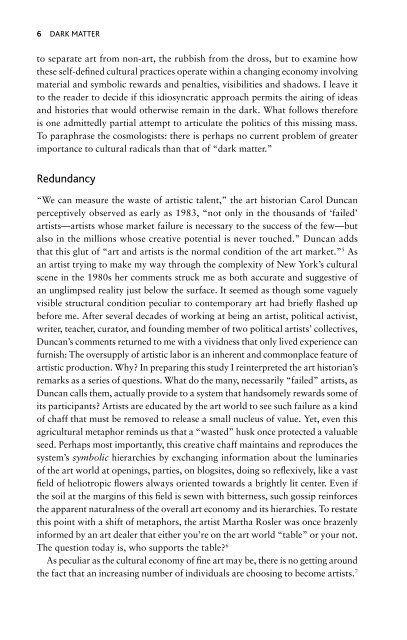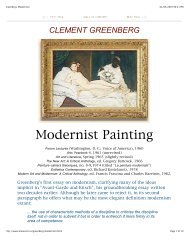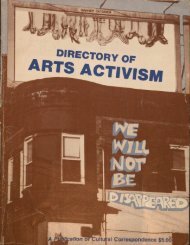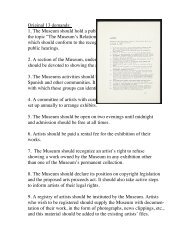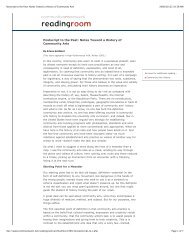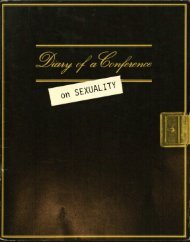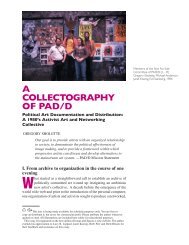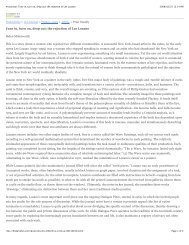Dark Matter Archives
Dark Matter Archives
Dark Matter Archives
You also want an ePaper? Increase the reach of your titles
YUMPU automatically turns print PDFs into web optimized ePapers that Google loves.
6 <strong>Dark</strong> matterto separate art from non-art, the rubbish from the dross, but to examine howthese self-defined cultural practices operate within a changing economy involvingmaterial and symbolic rewards and penalties, visibilities and shadows. I leave itto the reader to decide if this idiosyncratic approach permits the airing of ideasand histories that would otherwise remain in the dark. What follows thereforeis one admittedly partial attempt to articulate the politics of this missing mass.To paraphrase the cosmologists: there is perhaps no current problem of greaterimportance to cultural radicals than that of “dark matter.”Redundancy“We can measure the waste of artistic talent,” the art historian Carol Duncanperceptively observed as early as 1983, “not only in the thousands of ‘failed’artists—artists whose market failure is necessary to the success of the few—butalso in the millions whose creative potential is never touched.” Duncan addsthat this glut of “art and artists is the normal condition of the art market.” 5 Asan artist trying to make my way through the complexity of New York’s culturalscene in the 1980s her comments struck me as both accurate and suggestive ofan unglimpsed reality just below the surface. It seemed as though some vaguelyvisible structural condition peculiar to contemporary art had briefly flashed upbefore me. After several decades of working at being an artist, political activist,writer, teacher, curator, and founding member of two political artists’ collectives,Duncan’s comments returned to me with a vividness that only lived experience canfurnish: The oversupply of artistic labor is an inherent and commonplace feature ofartistic production. Why? In preparing this study I reinterpreted the art historian’sremarks as a series of questions. What do the many, necessarily “failed” artists, asDuncan calls them, actually provide to a system that handsomely rewards some ofits participants? Artists are educated by the art world to see such failure as a kindof chaff that must be removed to release a small nucleus of value. Yet, even thisagricultural metaphor reminds us that a “wasted” husk once protected a valuableseed. Perhaps most importantly, this creative chaff maintains and reproduces thesystem’s symbolic hierarchies by exchanging information about the luminariesof the art world at openings, parties, on blogsites, doing so reflexively, like a vastfield of heliotropic flowers always oriented towards a brightly lit center. Even ifthe soil at the margins of this field is sewn with bitterness, such gossip reinforcesthe apparent naturalness of the overall art economy and its hierarchies. To restatethis point with a shift of metaphors, the artist Martha Rosler was once brazenlyinformed by an art dealer that either you’re on the art world “table” or your not.The question today is, who supports the table? 6As peculiar as the cultural economy of fine art may be, there is no getting aroundthe fact that an increasing number of individuals are choosing to become artists. 7


